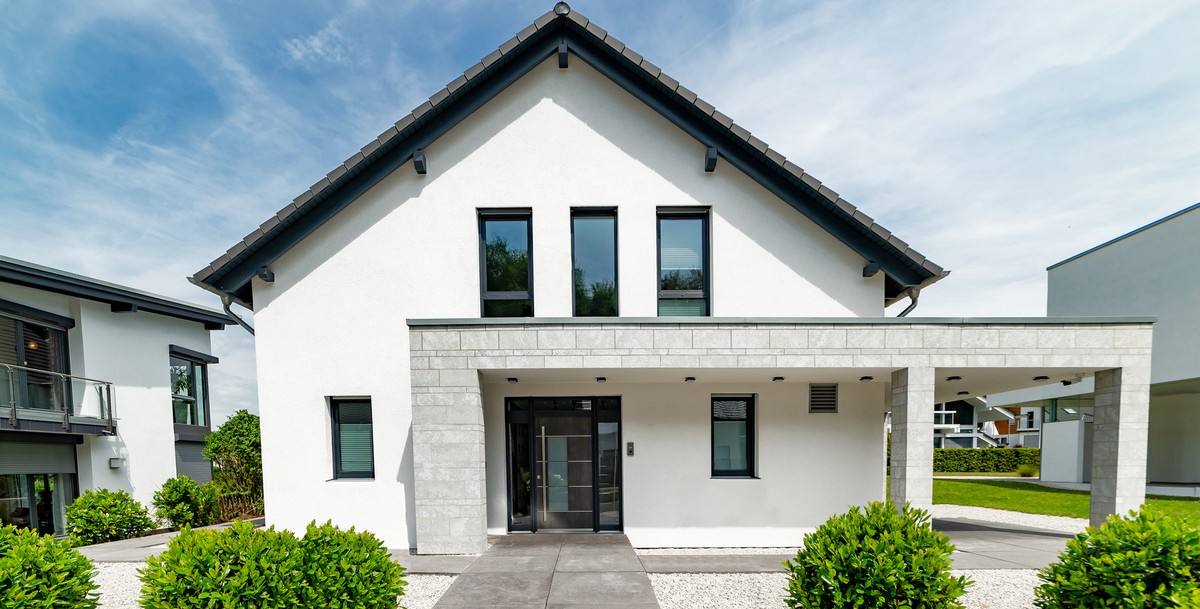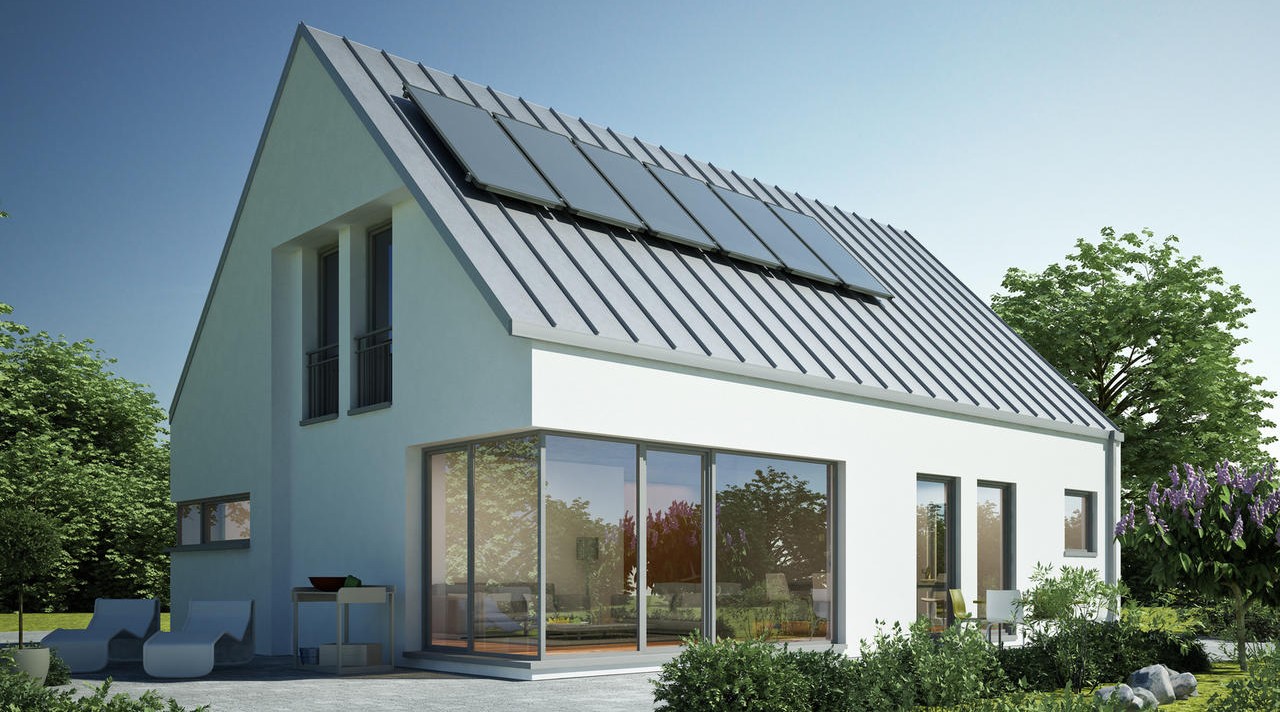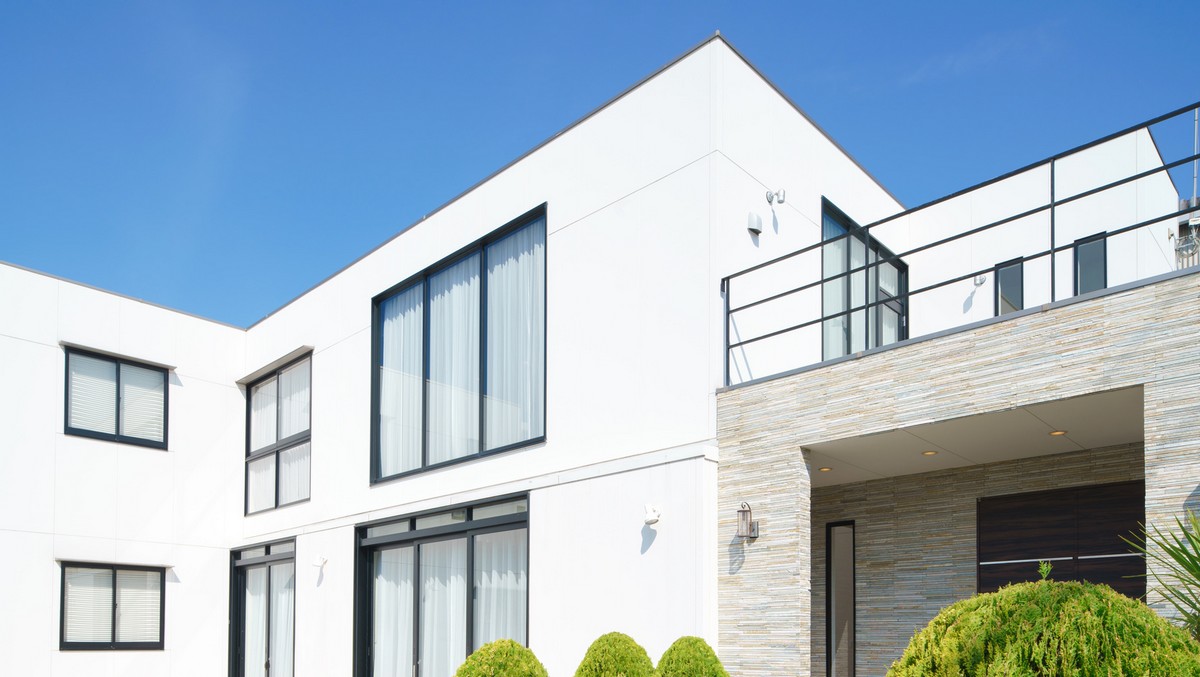
AAC is a material that perfectly fits the idea of sustainable development in the construction industry. The use of raw materials, which are within reach, low weight, ease of processing, low energy consumption during production and easy construction, as well as possibility of building energy-efficient buildings makes this material environmentally sustainable. All AAC elements produced by SOLBET comply with European standard EN 771-4: Specification for masonry units – Part 4: concrete blocks. They are also regularly tested by the Technical University in Cottbus and MPA KIWA in Berlin.
AAC from natural raw materials
Autoclaved aerated concrete is produced from raw materials: sand, water, cement, lime, i.e. components that are in our immediate environment. This makes this material 100% organic and user-friendly.
Uniform material with excellent thermal insulation
The porous structure of the material means that aerated concrete is a very good thermal insulator – air contained in the millions of pores is an excellent insulator. 1 m3 of raw material is sufficient to produce 5 m3 of AAC. 80% porosity classifies it as one of the warmest building materials.
AAC is a homogenious material. This means that all parameters of the material (e.g. thermal insulation, acoustics, compressive strength) are the same regardless of direction. AAC masonry units are blocks (but not holliw units). This makes the material technically predictable, which is important for the walls functioning in the building structure.
Healthy and safe
AAC is a healthy material. It owes its positive impact on the health of residents to its possibility of efficient regulation of humidity indoors. It is able to take the excess moisture from the room and give it back when the air becomes too dry. AAC exhibits full resistance to bacteria, molds and fungi. This is due to the fact that the chemical composition and the strongly alkaline pH of the AAC is not conducive to the growth of the microorganisms on the wall surface.

Durable
The history of AAC proves its durability. The material already has more than one-hundred-year tradition. The buildings that have been built from AAC since that time are still in use and are a very good proof of material durability and quality.
Resistant to moisture
AAC has a small capillarity due to the high porosity and large pores. What is more, the internal structure of AAC creates conditions which are conducive to quick eveporation of moisture. This is evidenced by studies of buildings flooded in 1997, which helped to check the behavior of AAC in conditions of extreme humidity.They showed that AAC walls standing in water for about two months, after its removal quickly dried up to the state before the floods. Parameters of dry walls: compressive strength, thermal insulation were the same as in buildings that have never been flooded.
Resistant to fire
When choosing AAC we get a material that provides high level of safety in case of fire. AAC is non-combustible, falling under A1 fire-reaction class. It does not burn, does not emit toxic gases and does not heat up under the influence of high temperatures and fire. Owing to the fact that it is a good insulator, it does not conduct heat. It is worth mentioning that in the fire tests laboratory, test chambers are made of AAC.
Ergonomic – handy and easy for building
Owing to low volumetric weight of AAC, it can be used to produce masonry elements of large dimensions, which are still handy and allow for fast construction of walls. The technology of production of the material makes it possible to provide AAC products with all shapes. In the production process we obtain tongued and grooved blocks and elements with profiled gripholes – such structural solutions affect the ease and speed of construction. Owing to its light weight, it is possible to transport material over long distances while making full use of the means of transport. The dimensional accuracy is also of great importance – blocks are precisely cut to size, so they can be walled with the use of thin joint.
The advantage of AAC over other materials is the ease of processing, i.e. cutting and polishing, which quickly provides the desired shape. Easy-to-use, handy and cheap tools are used for processing. It certainly makes the construction process easier and faster and enables precise building. It also reduces waste materials to a minimum. This can be an inspiration for you to build your own house by yourself.

Systemic construction
AAC is a very easy way to construct buildings. AAC system of masonry elements (comprising a rich assortment of blocks, boards, lintels and U blocks) makes construction easy. In addition to this, we offer a range of building chemicals: mortars, plasters, adhesives for thermal insulation systems. This creates a transparent and simple to use system. It also makes it possible to build with the use of any method (single-layer walls, walls with insulation, multi-layer walls, etc.). What is also important is the fact that such a system does not require too many elements. Due to the ease of cutting, it is not necessary to collect a number of other products (e.g. corner elements, complementary masonry elements, compensation elements are not needed). Systemic building also enables to correctly resolve structural details.
Comfortable for users, environmentally friendly
The structure of AAC provides for a pleasant microclimate indoors. With large temperature fluctuations outside the high thermal inertia of AAC allows to maintain a constant indoor temperature. The surface of the walls of AAC is warm in the winter – it does not radiate with cold, and in summer it’s cool, which greatly affects the well-being and comfort of users.
Wall made of white and non-staining material is appreciated at the stage of using the building, e.g. when you need to make a hole in the wall. After the drilling, the painted wall does not get dirty, as opposed to other materials. This seemingly small advantage is very much appreciated by users.
AAC is a 100% recyclable material. After possible demolition of the building it can be recycled and re-used for production.
Modern material, which saves time, money and strength
The use of AAC masonry elements results in savings for both the investor and the contractor. For the investor it saves time and costs associated with construction. In turn, for the investor’s contractor it provides the possibility of faster and more precise construction of buildings, compared to other technologies.
Production technology of AAC is still developing. There are new varieties and new products. This creates new perspectives for this material.